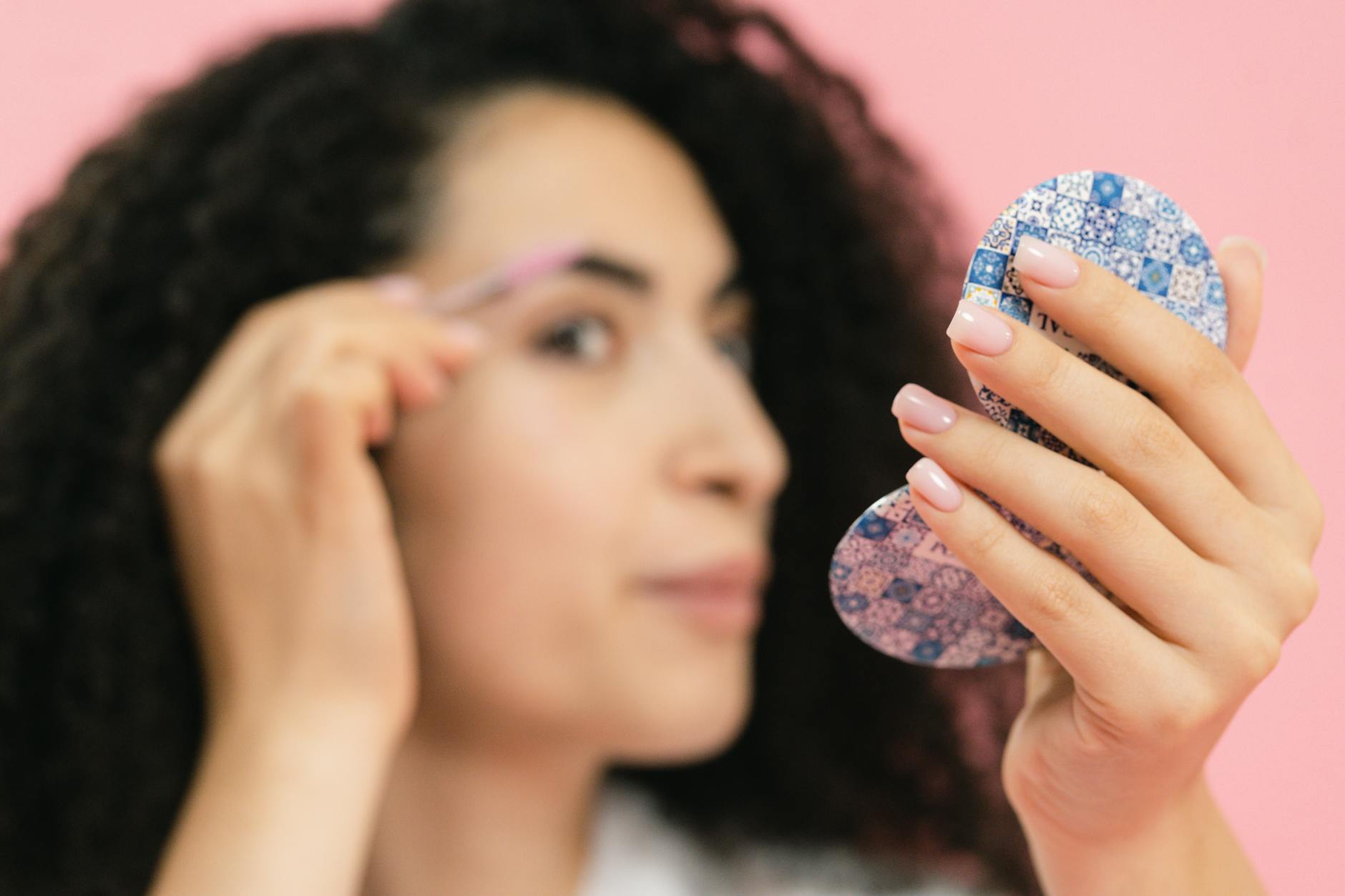Discover the hidden strategies to skyrocket your brand’s visibility in the beauty industry and unlock the secrets to successful beauty blog marketing.

Image courtesy of SHVETS production via Pexels
Table of Contents
- Understanding the Beauty and Body Enhancement Industry
- Building a Solid Foundation: Website Optimization
- Harnessing the Power of SEO for Maximum Visibility
- Capitalizing on Paid Marketing Channels
- The Power of Word-of-Mouth Marketing and Reviews
- Staying Ahead of the Curve: Emerging Trends and Technologies
- Conclusion
The beauty industry is vast and ever-evolving, with businesses ranging from hair salons and nail salons to body enhancement clinics and jewelry stores. In this competitive landscape, having a strong marketing strategy is crucial for success. But with so many options available, how can your beauty business stand out from the crowd? In this comprehensive guide, we will explore the tips and tricks you need to know to master marketing and SEO for the beauty and body enhancement industry.
Understanding the Beauty and Body Enhancement Industry
Before diving into marketing techniques, it’s essential to have a clear understanding of the beauty and body enhancement industry. From trends in hair and makeup to the latest advancements in body treatments, staying informed about the industry landscape is vital for crafting an effective marketing strategy.
Identifying your target audience and creating customer personas is crucial in determining the most effective marketing channels and messages. For example, a hair salon targeting a young, trendy clientele may choose to prioritize social media platforms like Instagram, whereas a medical spa targeting an older demographic may focus more on print advertising in local publications.
Analyzing the competition is also important in designing your marketing strategy. Take a closer look at what other businesses in your industry are doing and identify their strengths and weaknesses. This information will help you differentiate your business and identify unique selling points.
Building a Solid Foundation: Website Optimization
In today’s digital age, having a visually appealing and user-friendly website is essential for any business. Your website is often the first point of contact for potential customers, so it’s crucial to make a great impression.
Start by optimizing your website structure and navigation to ensure visitors can easily find the information they are looking for. A clutter-free and intuitive design will enhance the user experience and encourage visitors to stay on your site longer.
Having a fast-loading website is also crucial. Studies show that users tend to abandon sites that take more than a few seconds to load. Optimize images, minimize code, and consider using content delivery networks (CDNs) to improve website loading speeds.
Of course, no website optimization strategy would be complete without incorporating SEO techniques. Conduct keyword research to identify relevant keywords for your industry and incorporate them strategically throughout your website. This will help improve your organic search visibility and drive more targeted traffic to your site.
Harnessing the Power of SEO for Maximum Visibility
While website optimization is an important aspect of SEO, there are additional techniques you can employ to boost your brand’s visibility in search engine results. On-page SEO techniques such as optimizing meta tags, URL structure, headings, and content will help search engines understand the relevance and value of your website.

Image courtesy of www.linkedin.com via Google Images
Building high-quality backlinks is another crucial aspect of SEO. Backlinks from reputable websites signal to search engines that your website is trustworthy and relevant, which can improve your search rankings. Invest time in outreach campaigns, guest posting, and collaborating with influencers and industry experts to build a strong backlink profile.
Engaging and optimized content is key to attracting both search engines and your target audience. Keep your website updated with fresh and informative content, such as blog posts, articles, and product descriptions. Incorporate relevant keywords naturally within your content to improve search visibility.
Additionally, local SEO strategies are vital for location-based beauty businesses. Make sure your business is listed accurately in online directories, optimize your Google My Business profile, and encourage customers to leave online reviews. These efforts will help improve your local search rankings and attract customers in your area.
Capitalizing on Paid Marketing Channels
While organic search and SEO are important, paid marketing channels can also play a significant role in boosting your brand visibility in the beauty industry. Paid search advertising, such as Google Ads and Bing Ads, allows you to target specific keywords and demographics to reach potential customers actively searching for your services.
Social media advertising is another powerful tool for beauty businesses. Platforms like Facebook, Instagram, and Pinterest offer detailed targeting options to ensure your ads reach the right audience. Create eye-catching visuals and compelling ad copy to entice potential customers to click through to your website or contact your business.
Retargeting is a valuable strategy for reaching potential customers who have shown interest in your business. By placing a pixel on your website, you can target ads to people who have visited your site but haven’t made a purchase or inquiry. This helps keep your brand top of mind and encourages them to take the desired action.
To make the most of your paid marketing efforts, it’s important to set a budget and continuously optimize your campaigns. Monitor key metrics such as click-through rates (CTR), conversion rates, and return on ad spend (ROAS) to ensure you’re getting the most out of your investment.
The Power of Word-of-Mouth Marketing and Reviews
In the beauty industry, word-of-mouth marketing is a potent tool. Encourage your satisfied customers to leave positive reviews and testimonials online, as this can significantly influence potential customers. Consider implementing a review management system to monitor and respond to customer reviews, further building trust and credibility.

Image courtesy of www.writtenlyhub.com via Google Images
Influencer marketing is also prevalent in the beauty industry. Collaborating with social media influencers, beauty bloggers, and YouTubers can help expose your brand to a wider audience. Partner with influencers whose values align with your brand and consider promoting exclusive offers or contests to their followers to boost engagement.
Implementing referral programs and customer loyalty initiatives are additional strategies to leverage word-of-mouth marketing. Offer incentives to your customers for referring others to your business or reward them for repeat purchases. Building strong relationships with your customers will not only encourage repeat business but also increase the likelihood of them recommending your business to others.
Lastly, engaging with your customers on social media platforms is crucial for building community and brand loyalty. Respond promptly to comments, messages, and mentions, and encourage user-generated content by reposting customer photos or videos. This fosters a sense of connection and can help build a loyal customer base.
Staying Ahead of the Curve: Emerging Trends and Technologies
To stay competitive in the beauty industry, it’s important to stay up to date with emerging trends and technologies. Augmented reality (AR) and virtual reality (VR) are revolutionizing the way customers experience beauty products and services. Consider incorporating AR filters or virtual try-on features on your website or social media platforms to provide a unique and interactive experience for your customers.
Video marketing is another trend that beauty businesses should leverage. Tutorials, product reviews, and behind-the-scenes videos can help showcase your expertise and personality, attracting and engaging your target audience. Platforms like YouTube and TikTok are particularly popular for beauty-related video content.
With voice search becoming increasingly popular, optimizing your website for voice-assistant-friendly beauty businesses is essential. Make sure your website’s content is structured in a way that matches common voice search queries. Utilize schema markup and aim to provide concise and informative answers that align with voice search users’ needs.
Tracking and analyzing your marketing efforts is crucial to understanding what’s working and what needs improvement. Utilize analytics tools like Google Analytics to monitor website traffic, user behavior, and conversion rates. This data-driven approach will help you make informed decisions and optimize your marketing strategies for better results.
Conclusion
In the competitive beauty industry, a robust marketing strategy is essential for stand out from the crowd. By understanding the industry, optimizing your website, harnessing the power of SEO and paid marketing, leveraging word-of-mouth marketing, and staying ahead of emerging trends, you can boost your brand’s visibility and attract more customers. Remember, marketing is an ongoing process, so keep learning, adapting, and experimenting to stay ahead of the competition and achieve long-term success in the beauty and body enhancement industry.